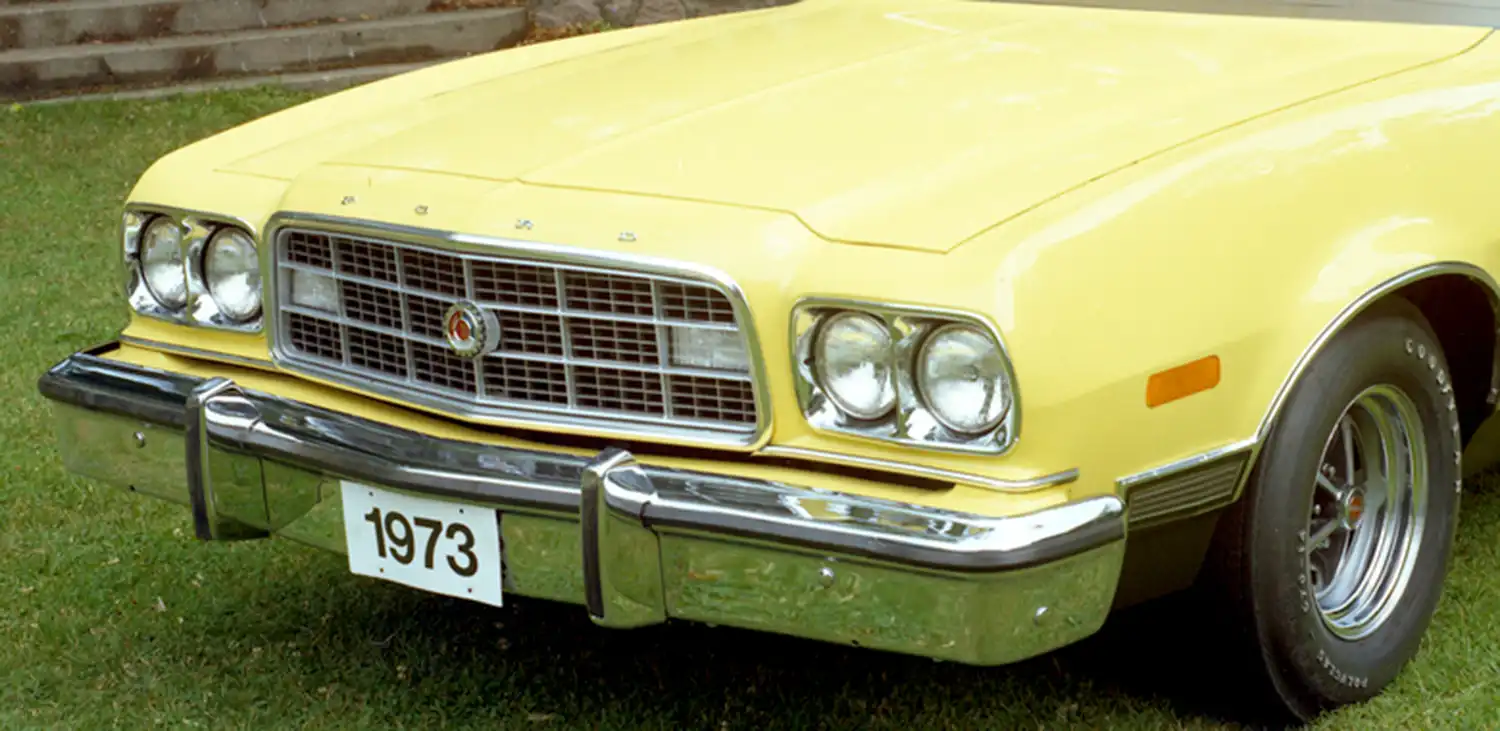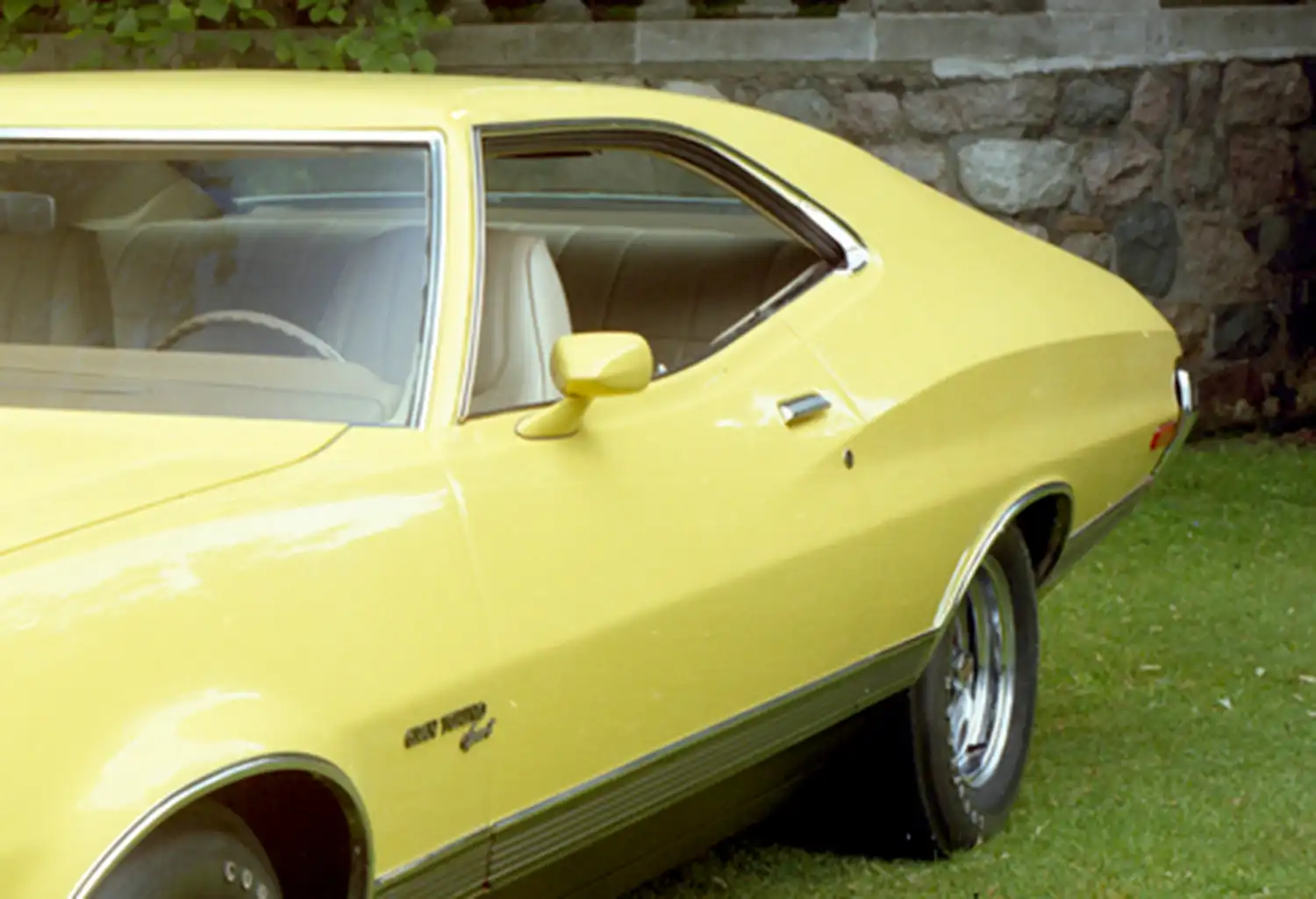
A Mid-Sized Marvel: The 1973 Ford Gran Torino Sport represented the sporty iteration of Ford’s popular intermediate line. Following the redesign in 1972 that gave the Gran Torino a more streamlined and muscular appearance, the Sport model further emphasized this with unique styling cues. These often included a distinctive hood scoop (functional or non-functional depending on the engine), louvered rear quarter windows, and sometimes bold racing stripes. The Gran Torino name itself was inspired by the Italian city of Turin, often referred to as the “Detroit of Italy,” hinting at Ford’s aspirations for this model. The 1973 model year saw minor trim changes and adjustments to meet evolving safety and emissions regulations.
Distinctive Styling: The Gran Torino Sport’s design was a departure from its Fairlane and Torino predecessors, embracing a more flowing and integrated look. The long hood and short deck proportions, a hallmark of the era’s muscle car aesthetic, were evident. The front fascia typically featured a prominent grille and integrated headlights, while the rear showcased a clean design with horizontal taillights. The Sport model’s specific styling elements, like the hood scoop and louvered windows, set it apart from the more standard Gran Torino trims, appealing to buyers seeking a sportier image. Various wheel options and exterior colors allowed for personalization, contributing to its widespread appeal.
Interior Comfort and Features: Inside, the 1973 Gran Torino Sport aimed to provide a blend of sporty flair and comfortable amenities. Bench seating was standard, but bucket seats were a popular option, often paired with a center console that could house the shifter for manual or floor-mounted automatic transmissions. The dashboard layout was driver-focused, with gauges providing essential information. Features like air conditioning, power steering, and power brakes were available, enhancing the driving experience. Upholstery options ranged from durable vinyl to more plush cloth, depending on the trim level and chosen options. The overall interior design reflected the trends of the time, emphasizing a balance between style and practicality for the American driver.

Unleashing the Power: Engine Options and Performance: The 1973 Ford Gran Torino Sport offered a range of engine choices, catering to different performance preferences. The standard engine was usually a V8, with larger and more powerful options available for those seeking true muscle car performance. These could include the 302 cubic inch V8, the 351 cubic inch V8 (available in various configurations like the Cleveland or Windsor), and the top-of-the-line 429 cubic inch Cobra Jet V8 (though availability could vary depending on the specific production period and emissions regulations). When equipped with the larger V8 engines, the Gran Torino Sport could deliver impressive acceleration and a thrilling driving experience. Transmissions typically included a standard three-speed manual, with options for a four-speed manual or a three-speed automatic transmission. The performance figures would vary significantly based on the chosen engine and transmission, with the most potent versions offering substantial horsepower and torque figures for the era.
Cultural Impact: Beyond its performance and styling, the 1973 Ford Gran Torino Sport gained significant cultural recognition, largely due to its prominent role in the popular 1970s television show “Starsky & Hutch.” The bright red Gran Torino with its distinctive white stripe became an instantly recognizable icon, further cementing the car’s place in American popular culture. This exposure helped to maintain and even increase interest in the model long after its production run ended. The car represented a specific era of American automotive design and the fascination with powerful, stylish coupes.
The Gran Torino Legacy: While production of the Gran Torino ended in 1976, its impact on American automotive history and popular culture remains significant. The 1973 Gran Torino Sport, in particular, stands out as a prime example of the era’s design trends and the enduring appeal of a stylish and powerful intermediate coupe. Its association with “Starsky & Hutch” ensures its continued recognition, and well-preserved or restored examples remain sought after by collectors and enthusiasts who appreciate its unique blend of style, performance, and cultural significance. The Gran Torino Sport represents a time when American automakers produced vehicles that were both aspirational and attainable, leaving a lasting impression on the automotive landscape.
Summary:
- Second-generation Ford Gran Torino (1972-1976).
- Sport model featured unique styling elements like hood scoops and louvered windows.
- Offered a range of V8 engine options, including the potent 429 Cobra Jet.
- Available with manual and automatic transmissions.
- Gained iconic status through the “Starsky & Hutch” television show.
- Represents a key era in American muscle car design.
- Well-preserved examples are popular among collectors.
Disclaimer: Information provided is for general knowledge. Specific details may vary based on production variations and regional specifications.
Source: Ford Heritage Vault
AI Assistance: Gemini
